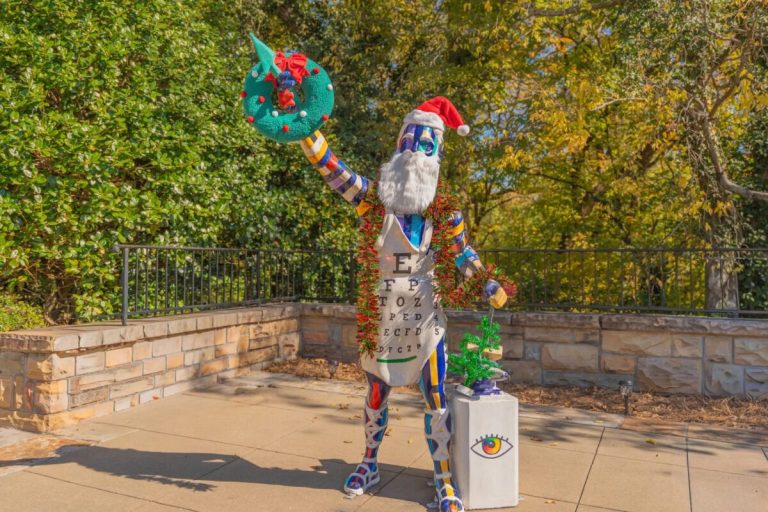Fertilizing your new spring garden? Your help is needed to reduce phosphorus in Birmingham waterways. 2 things you can do now
Reading time: 5 minutes
Sponsored

Instead of spending $20-30 million on wastewater plant upgrades, Jefferson County is hoping you’ll help contain the last 1% of phosphorus in local waterways by not putting a certain type of fertilizer on your yard this spring. Why should you care and what can you do? Bham Now explains.
So, what is phosphorus?
Phosphorus is a mineral humans need in order to function. We have it in our bodies. While it is an important mineral needed to sustain all life, too much can also be a bad thing for our bodies and in the environment.

Excess nutrients like phosphorus in our waterways mean there are extra nutrients for algae blooms to thrive. Algae blooms consume oxygen and kill fish, which in turn throws off the whole ecosystem. So why is Jefferson County having to deal with phosphorus in the water?
Jefferson County has spent over $100 million to remove phosphorus through its processes, but they also need help keeping it from running off our lawns.

Phosphorus is found in fertilizers. When it rains, the fertilizer runoff goes down the nearest storm drain, which then travels to our lakes and rivers.
This is something the EPA is trying to combat. By 2025, Jefferson County is expected to meet the new environmental phosphorus regulations in our local waterways. They’ve done a great job removing 99% of the problem. Now, it’s our turn as citizens to help!

For the love of fishies, please help this cause
This phosphorus removal process started in Jefferson County in 2014 comes in at the top of the charts for the “first-world conveniences that we take for granted but shouldn’t” department. They’ve already done most of the work and just need help with that last one percent.
To help resolve this problem, officials are asking us all to chill out on two things: putting turbo grow fertilizers in our yards and using granulated dishwashing detergent.

Such fertilizers include the popular 13/13/13 formulation, which is the primary nutrient ratios of the fertilizer contained in the bag.
There are three primary nutrients in the fertilizer:
- Nitrogen
- Phosphorus
- Potassium
In the higher concentrated 13/13/13 bags, the mix contains (13)Nitrogen/(13)Phosphorus/(13)Potassium.

“Generally, lawns in this part of Alabama do not need a fertilizer with phosphorus in it at all,” said David Denard, Director of Jefferson County Environmental Services Department.
Denard says that by buying fertilizer with phosphorus, you’re spending unnecessary dollars on something that won’t do much for your yard. Instead, he says, save your money and the environment and buy a fertilizer with no or very low concentration of phosphorus.

Sunset Magazine explains:
“A fertilizer containing all three major nutrients is called a complete fertilizer; a product that supplies only one or two of them is an incomplete fertilizer. Using a complete fertilizer for every garden purpose seems sensible, but in fact it isn’t always the best choice. If the soil contains sufficient phosphorus and potassium and is deficient only in nitrogen (as is often the case), you can save money by using an incomplete fertilizer that provides nitrogen alone.”

How to find fertilizer low in phosphorus:
Look at the bag! The middle number in the three number element ratio series should be as close to zero as possible.
Denard added two extra ways to combat the phosphate problem: Not over fertilizing or fertilizing before it rains.

Dishwashing Detergent Granules
Another contributor to the phosphorus problem? Dishwashing detergent. Denard says that the granulated detergent contains phosphorus which, you guessed it, eventually makes its way to the water supply. Instead, switch to tablets or gels. If you prefer granulated detergent, look for no phosphorus on the label.
By doing these two things, you can help reduce the levels of phosphorus tremendously in Jefferson County. And, potentially save the county an estimated $20-30 million in plant upgrades. Think of where all those tax dollars could go!
Sponsored by:




